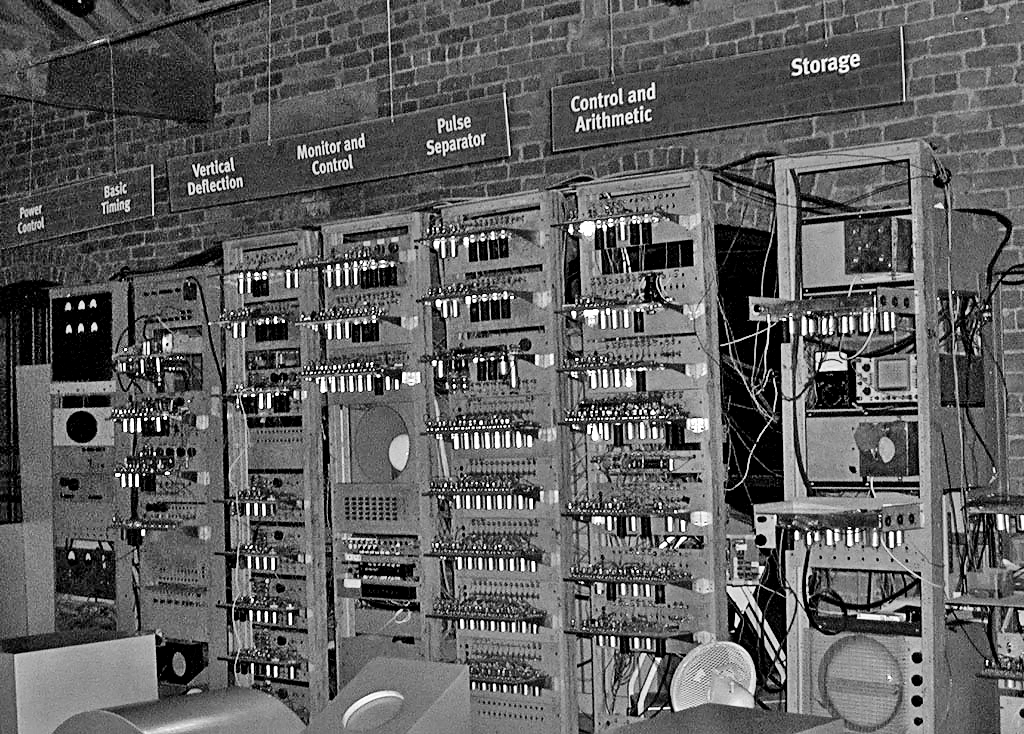
The Mancheter Baby, which was also called the Small-Scale Experminental Machine, or SSEM. It is the first case of a machine with electronically stored instructions.
Built at the University of Manchester by Frederic C. Williams, Tom Kilburn and Geoff Tootill, it ran its first program on the 21st of June 1948.
The Baby was not intended to be a practical computing engine byt instead was designed for the purpose of testing the Williams-Kilburn tube, which was the first Random-access memory made. Described as "small and primitive" 50 years after its creation, it was the first working machine to contain all the elements essential to a modern electronic digital computer. As soon as the Baby had demonstrated the feasibility of its design, a project was initiated at the university to develop it into a full scale operational machine, the Manchester Mark 1. The Mark 1 in turn quickly became the prototype for the Ferranti Mark 1, the world's first commercially available general-purpose computer.
The Baby had a 32-bit word length and a memory of 32 words (1 kilobit, 1,024 bits). As it was designed to be the simplest possible stored-program computer, the only arithmetic operations implemented in hardware were subtraction and negation; other arithmetic operations were implemented in software. The first of three programs written for the machine calculated the highest proper divisor of 218 (262,144), by testing every integer from 218 downwards. This algorithm would take a long time to execute—and so prove the computer's reliability, as division was implemented by repeated subtraction of the divisor. The program consisted of 17 instructions and ran for about 52 minutes before reaching the correct answer of 131,072, after the Baby had performed about 3.5 million operations (for an effective CPU speed of about 1100 instructions per second).